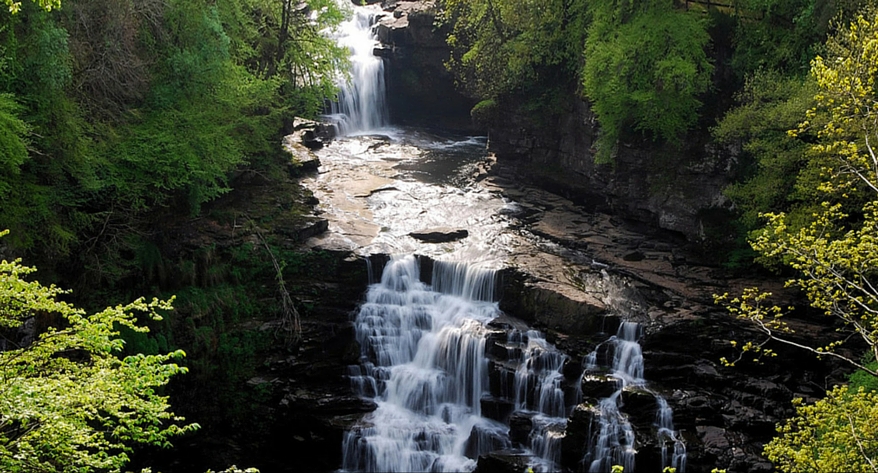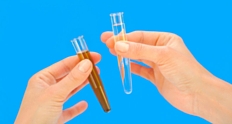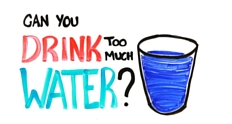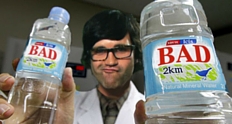Most people find it surprising, even shocking, that over 1500 bottles of water are consumed every second of every day just in the United States alone. That's over 50 billion bottles of water per year!
What's more interesting is what kind of water is in each of those bottles.
Sadly, few consumers realize that most of what they're paying for isn't bottled spring or mineral water at all, but rather purified municipal drinking water that's likely been extracted from a highly polluted source.
Today, you're going to learn about the differences between bottled spring water and bottled mineral water, along with some warning signs you should look for on the labels of the water you buy, to ensure you're not buying the same quality water you could easily get for free from your tap at home.
Table of contents
- What's Mineral Water?
- What's Spring Water?
- So What's the Actual Difference?
- A Word of Caution
What's Mineral Water?
The minerals in mineral water add a unique taste to the finished product. Some people prefer flavored mineral water, while still others prefer the natural rich taste and find it to be much more thirst quenching than other types. Because of the bicarbonate content in this kind of water, most brands are naturally carbonated, while several companies add in even more carbonation to suit the preferences of their customers.
Mineral water can come from a variety of sources including springs and wells. The main distinction between it and regular spring or tap water is that it must contain at least 250 parts per million (ppm) of trace minerals. These minerals include calcium and magnesium mostly, but also other trace minerals.
The high calcium and magnesium content are what makes water like One Water so desirable to consumers. When these minerals are naturally dissolved in water, the body is able to absorb and use them much more easily than any other dietary or supplement sources.
True mineral water is also much more rare than other water sources. Water can't just sit on rock beds to become the mineral-rich water you'll later purchase at the store. Instead, the water must move over the rocks containing minerals several times, over several years in order to become legitimate mineral water.
What's Spring Water?
Spring water is virtually tasteless compared to mineral water or commercially-treated tap water and all the toxic chemicals it contains. The tasteless aspect of the water is what most consumers like about it, thinking it to be pure and free from pollutants of all kinds. However, how clean your bottle of spring water is comes down to where it's sourced, and the cleanliness of the facilities it's bottled in.
Spring water comes from aquifers under the soil and/or located within rock bed formations. This type of water can sometimes be rich in trace minerals too, including calcium and magnesium.
To be labeled as “spring water” it only has to come from a confirmed spring source, it does not have to contain the same 250 ppm mineral content as mineral water. Some sources contain very little minerals, while still others may contain a lot. For this reason, spring water can also be mineral water; it's all very source dependent.
Bottled spring water is much less expensive than most of its bottled mineral water counterparts. This is due to non-mineral spring sources being much more commonplace all over the globe, whereas much of the world's richest mineral water sources are located in Europe and throughout Asia.
So What's the Actual Difference?
The difference comes down to the guaranteed mineral concentration found in bottled mineral water.
Most jurisdictions not only require the water to contain 250 ppm of minerals, they also require that bottling companies regularly test the mineral concentrations for up to two years prior to bottling and selling it, with similarly strict testing guidelines for after bottling has begun, to ensure consumers are getting what they're paying for in every bottle they purchase.
Spring water can be mineral water and mineral water can come from a natural spring source, such as One Water's all natural mineral spring water. This, of course, provided the water meets the 250 ppm guideline.
A Word of Caution
If the label says “purified” or “distilled” on your favorite water brands, you should stop drinking them.
Reverse osmosis (also called simply “RO”) is a purification process that's proven to have negative health effects.
Distilled water is even worse, as it strips your body of electrolytes and can lead to an early death, as detailed in this article by Dr. Joseph Mercola.
The choice between drinking bottled spring water or choosing the more mineral-dense bottled mineral water is largely a matter of personal preference. However, always keep in mind that bottled mineral water does offer more guarantees as to the mineral content and thus, more benefits to your health in the form of extra dietary calcium, magnesium and other trace minerals that we all need plenty of each and every day.
Read also "The Health Risks of Demineralized Water"






